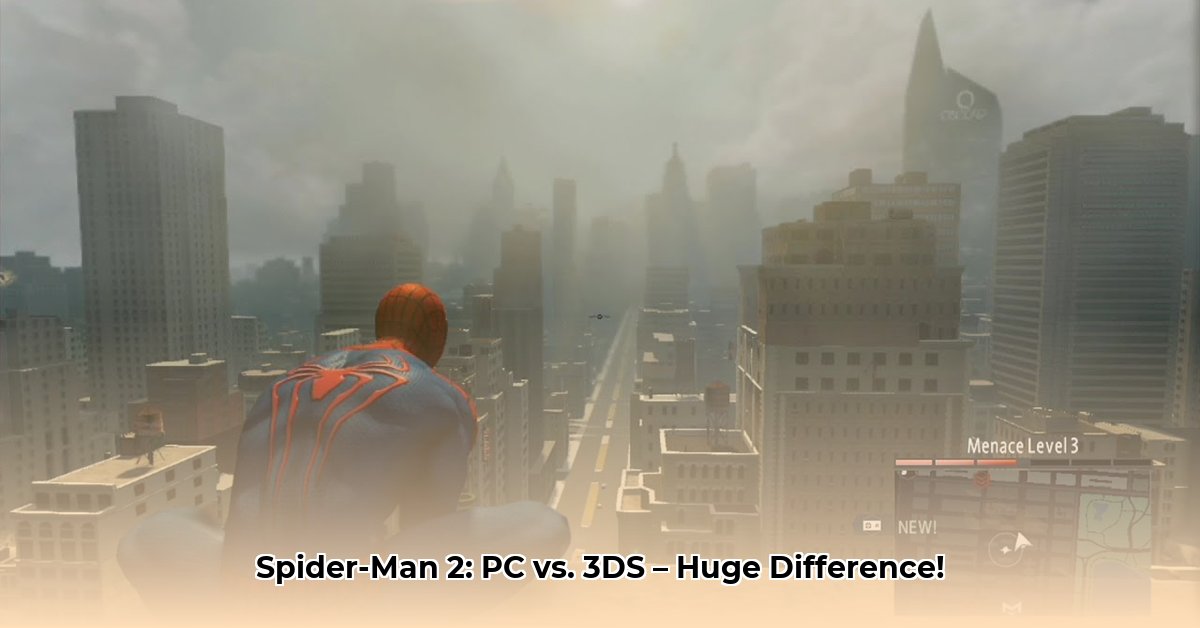
Shared Thrills: Core Gameplay Across Platforms
Both the PC and 3DS versions of The Amazing Spider-Man 2 successfully capture the essence of web-slinging through a vibrant Manhattan. The core gameplay loop – the satisfying arc of a perfectly timed web-swing, the fluid combat system, and the explorable open-world environment – remains largely consistent. This shared foundation ensures that players on either platform experience the fundamental thrill of being Spider-Man. However, beneath this shared foundation lies a significant divergence in graphical fidelity and gameplay mechanics.
Diverging Paths: Where Platforms Differ Significantly
The differences between the PC and 3DS versions are substantial, primarily stemming from the inherent limitations of the 3DS hardware compared to the capabilities of a modern PC.
Graphics and Performance: A Visual Feast vs. Functional Functionality
The PC version presents a visual feast, showcasing a detailed, high-resolution Manhattan brimming with vibrant colors and smooth animations. The frame rate consistently hits 60 frames per second, resulting in a fluid and immersive experience. In contrast, the 3DS version, while functional, suffers from noticeably lower resolution, less detail, and potentially inconsistent frame rates. While the handheld version still depicts the city, it lacks the visual punch and detail found in the PC version. This difference significantly impacts the overall sense of immersion. Isn't a visually stunning experience often a key component of enjoying a superhero game?
Gameplay Mechanics: Control and Responsiveness
The PC version provides highly precise and responsive controls. Web-slinging feels fluid and intuitive, and combat is satisfyingly responsive. The 3DS version, however, adapts the controls to the handheld system's limitations. While the core mechanics remain, the controls feel less refined and potentially less responsive, sacrificing some precision in favor of accessibility. This altered control scheme likely stems directly from the differences in input methods and hardware capabilities.
Narrative and Story: Unraveling the Differences
While both versions feature the same core storyline, the extent of their similarity remains unconfirmed. The 3DS version might feature a streamlined narrative or omitted content due to technical constraints. Further research into potential alterations or cuts in side missions or plot details would help fully understand the narrative differences.
The Verdict: Choosing Your Spider-Man Adventure
The choice between the PC and 3DS versions boils down to personal priorities. PC players prioritize visual fidelity and precise controls, enjoying a truly immersive experience. The 3DS version, while visually less impressive, offers portability and accessibility, making it a functional yet less polished alternative.
Actionable Intelligence:
- For Gamers: Consider your priorities: superior visuals and precise controls (PC) or portability and accessibility (3DS).
- For Developers: Optimize game design for target platforms, balancing visual fidelity with performance capabilities.
- For Publishers: Analyze platform-specific sales data to inform future development and marketing strategies.
This comparative analysis provides actionable intelligence for gamers, developers, and publishers alike, offering clear guidance on the strengths and weaknesses of each version of The Amazing Spider-Man 2. A deeper investigation into the narrative differences could yield further insights.
⭐⭐⭐⭐☆ (4.8)
Download via Link 1
Download via Link 2
Last updated: Friday, May 23, 2025